-
CATEGORY ::
- All Seeds /
- All Flower Seeds /
- All Campanula Seeds





Bellflower Seeds - Superba
SEASON
Perennial
USDA ZONES
3 - 8
HEIGHT
20 inches
BLOOM SEASON
Summer
BLOOM COLOR
Purple
ENVIRONMENT
Full sun
SOIL TYPE
Moist, well-drained soils, pH 5.8 - 6.8
DEER RESISTANT
Yes
HOUSE PLANT
No
SEASON
Perennial
USDA ZONES
3 - 8
HEIGHT
8 inches
BLOOM SEASON
Summer to fall
BLOOM COLOR
Sky blue
ENVIRONMENT
Full sun
SOIL TYPE
Moist, well-drained, pH 5.8 - 6.8
DEER RESISTANT
Yes
HOUSE PLANT
No
SEASON
Perennial
USDA ZONES
3 - 8
HEIGHT
8 inches
BLOOM SEASON
Summer to fall
BLOOM COLOR
White
ENVIRONMENT
Full sun
SOIL TYPE
Moist, well-drained, pH 5.8 - 6.8
DEER RESISTANT
Yes
HOUSE PLANT
No
SEASON
Biennial
USDA ZONES
3 - 9
HEIGHT
32 inches
BLOOM SEASON
Spring and summer
BLOOM COLOR
Rose
ENVIRONMENT
Full sun to partial shade
SOIL TYPE
Well-drained, pH 6.6 - 7.8
SEASON
Biennial
USDA ZONES
3 - 9
HEIGHT
32 inches
BLOOM SEASON
Spring and summer
BLOOM COLOR
Blue
ENVIRONMENT
Full sun to partial shade
SOIL TYPE
Well-drained, pH 6.6 - 7.8
SEASON
Biennial
USDA ZONES
3 - 9
HEIGHT
32 inches
BLOOM SEASON
Spring and summer
BLOOM COLOR
White
ENVIRONMENT
Full sun to partial shade
SOIL TYPE
Well-drained, pH 6.6 - 7.8
SEASON
Perennial
USDA ZONES
3 - 7
HEIGHT
40 inches
BLOOM SEASON
Early summer to mid summer
BLOOM COLOR
Blue
ENVIRONMENT
Full sun
SOIL TYPE
Well-drained soils, pH 5.8 - 7.2
DEER RESISTANT
Yes
HOUSE PLANT
No
SEASON
Perennial
USDA ZONES
3 - 7
HEIGHT
40 inches
BLOOM SEASON
Early summer to mid summer
BLOOM COLOR
White
ENVIRONMENT
Full sun
SOIL TYPE
Well-drained soils, pH 5.8 - 7.2
DEER RESISTANT
Yes
HOUSE PLANT
No
About...
Bellflower (Campanula Glomerata Superba) - Bellflower seeds are so rewarding to grow and they establish into a hardy, reliable perennial that makes a great addition to the flower bed. Adored by hummingbirds and butterflies, Bellflower Superba blooms significantly in early summer on compact plants.
MORE CAMPANULA OPTIONS
Planting Directions
TEMPERATURE
70F
AVERAGE GERM TIME
14 - 28 days
LIGHT REQUIRED
Yes
DEPTH
Do not cover
SOWING RATE
3 - 4 seeds per plant
MOISTURE
Keep moist until germination
PLANT SPACING
12 - 20 inches
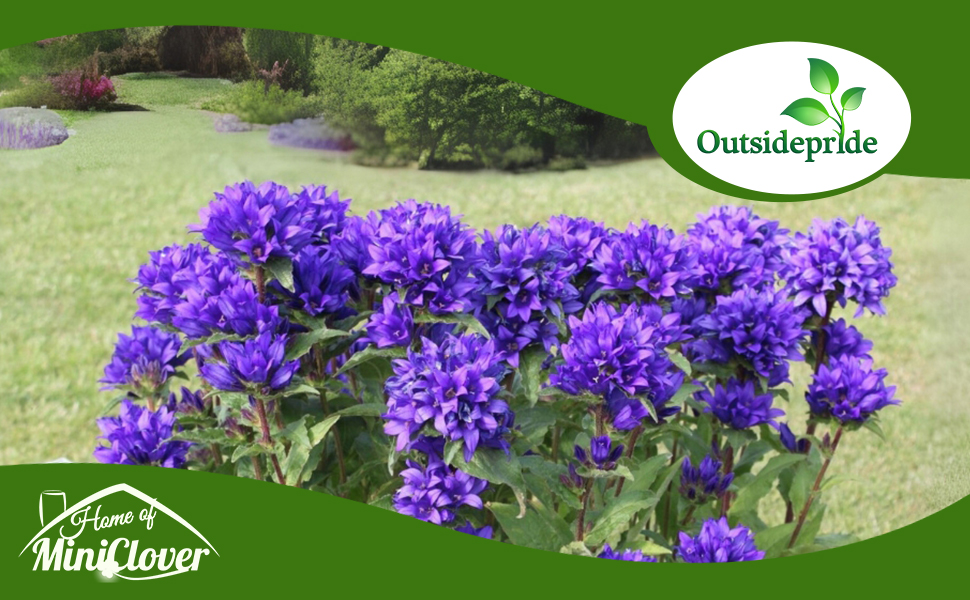
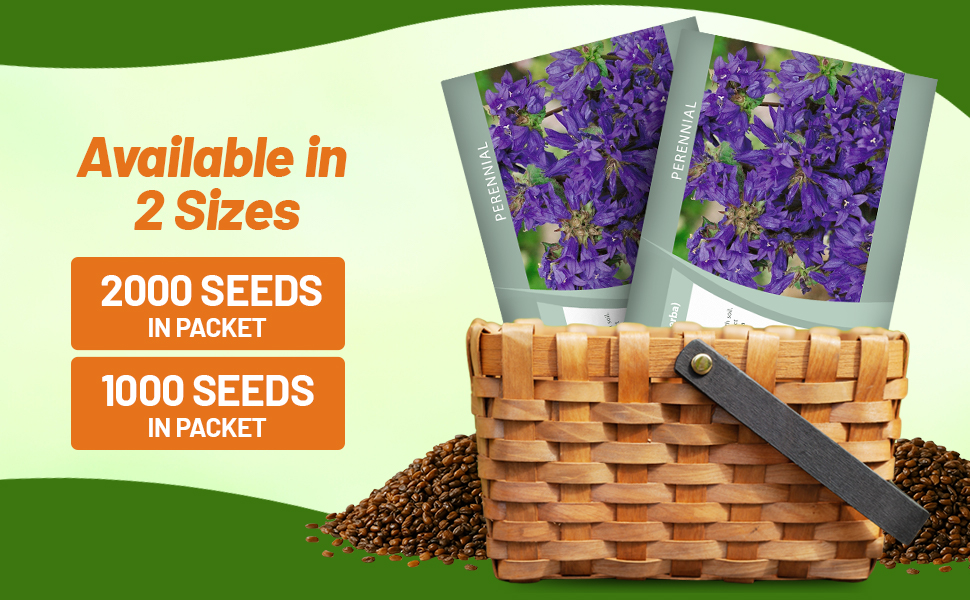
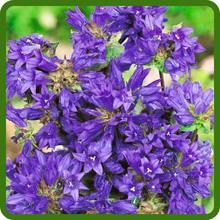
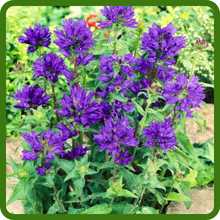
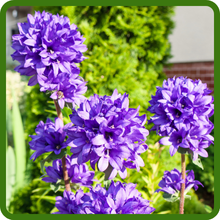
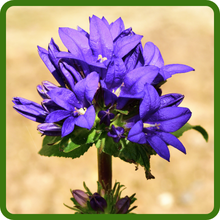
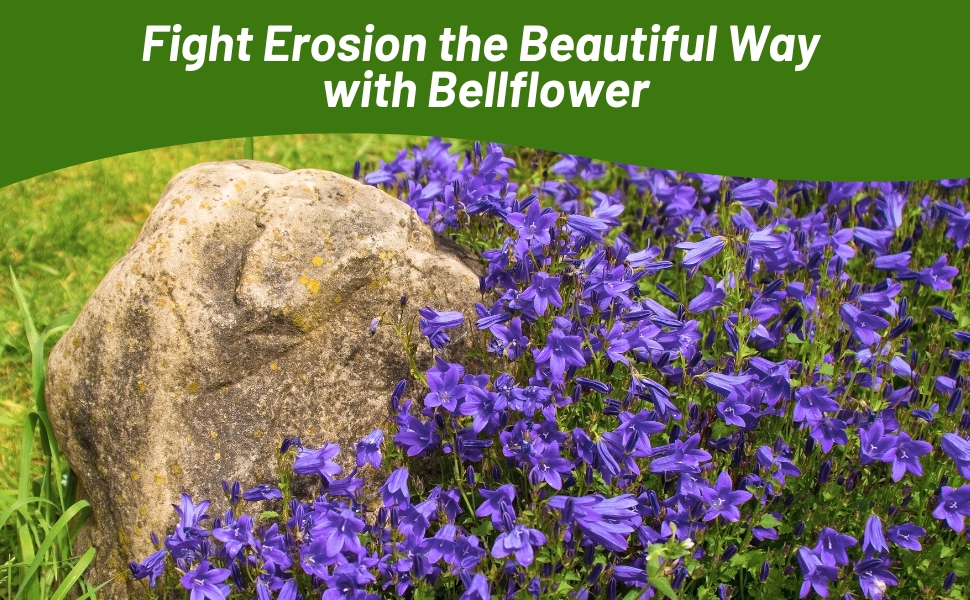

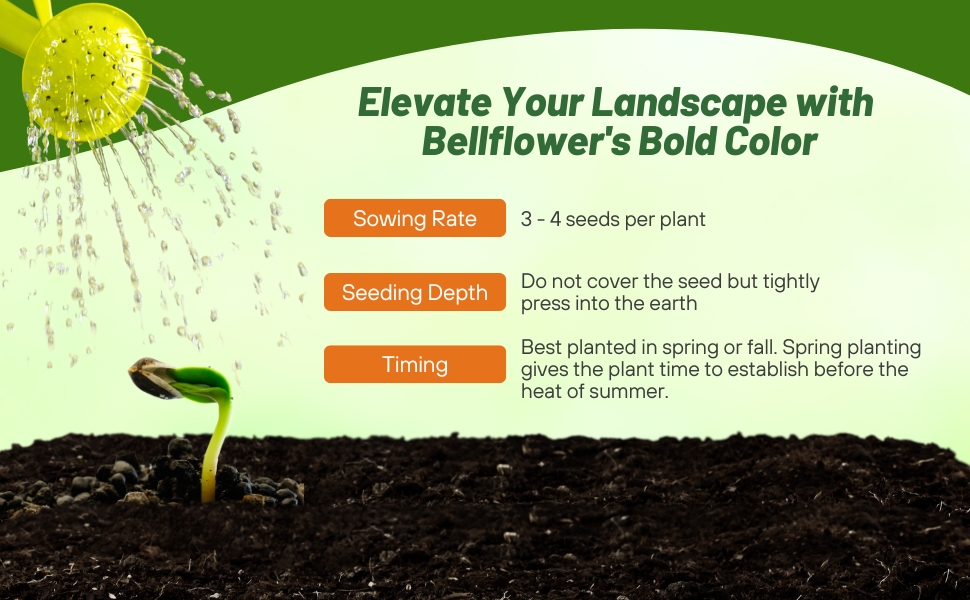
Bellflower (Campanula Glomerata Superba) - Bellflower seeds are so rewarding to grow and they establish into a hardy, reliable perennial that makes a great addition to the flower bed. Adored by hummingbirds and butterflies, Bellflower Superba blooms significantly in early summer on compact plants.
Common Questions
Do I need to divide my Campanula Glomerata Bellflower?
Yes, Campanula Glomerata should be dived every 3 - 5 years.
Do Campanula Glomerata bellflower make good cut flowers?
Yes, their blooms will last up to 2 weeks in the base.
Are Campanula Glomerata Bellflower good for borders?
Yes, Campanula Glomerata work great in beds and borders.
Can I grow my Campanula Glomerata in a container?
Yes, Campanula Glomerata can be grown as a container plant.
In what areas of landscape are Campanula Glomerata Bellflower grown?
Campanula Glomerata are used for beds, borders, cottage gardens, rock gardens and containers.
Do Campanula Glomerata make a good attractant?
Yes, they attract bees, butterflies and hummingbirds.
Planting Directions
TEMPERATURE
70F
AVERAGE GERM TIME
14 - 28 days
LIGHT REQUIRED
Yes
DEPTH
Do not cover the seed but tightly press into the soil
SOWING RATE
Approximately 5000 seeds covers 100 square feet or 3 - 4 seeds per plant
MOISTURE
Keep moist until germination
PLANT SPACING
10 inches
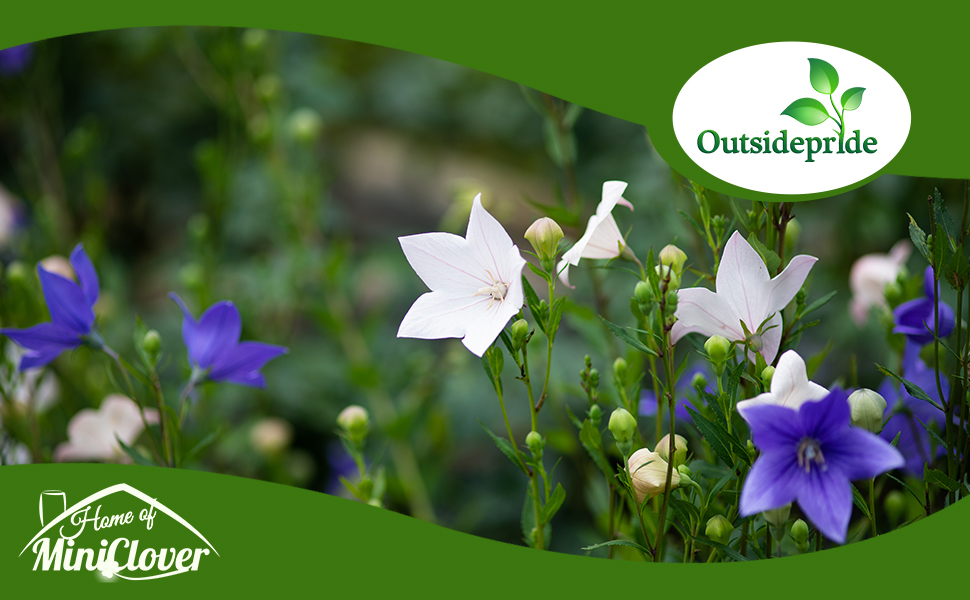
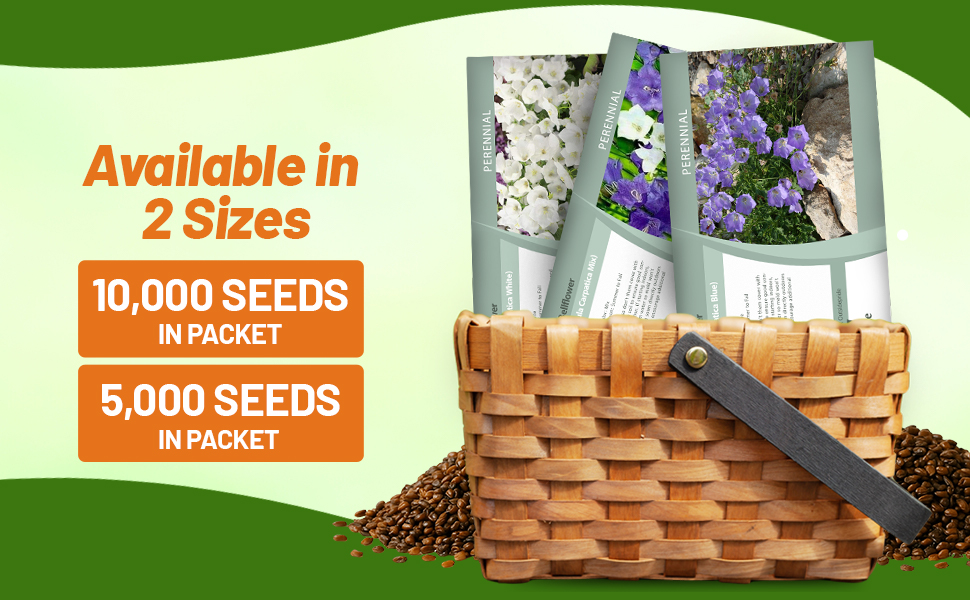
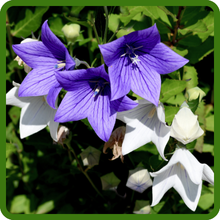
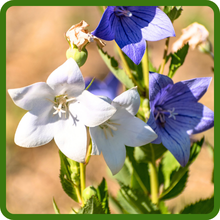

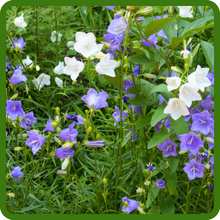
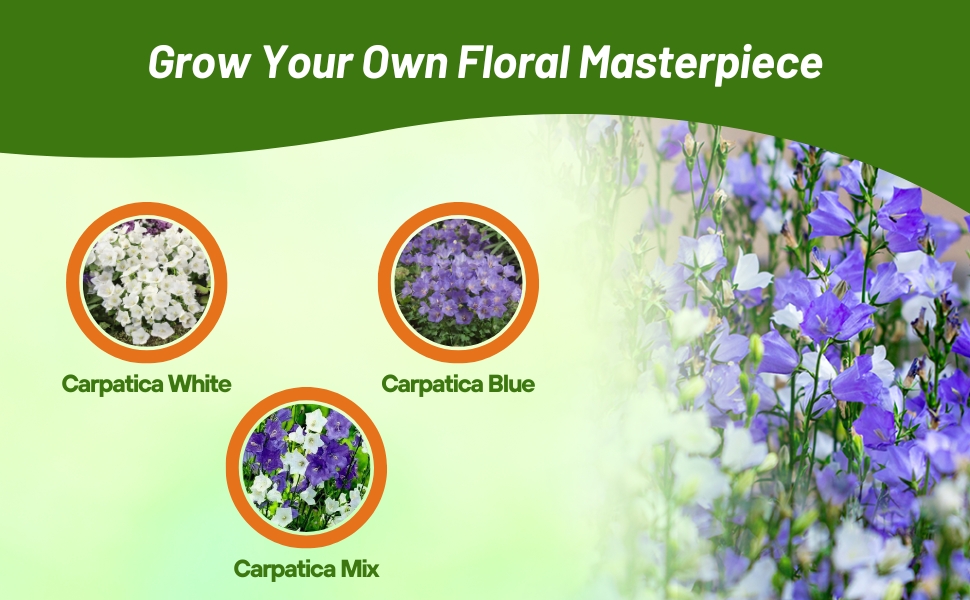
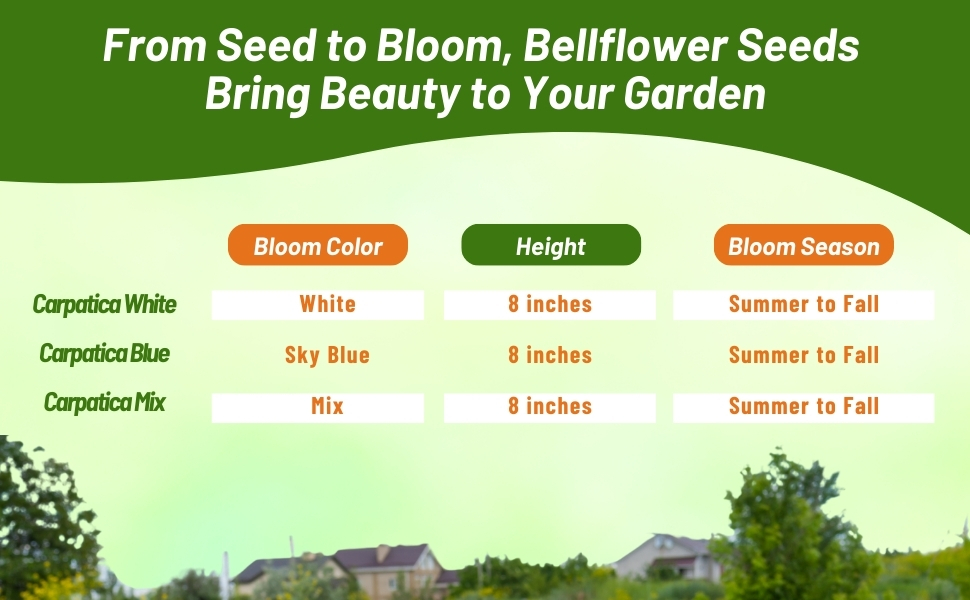
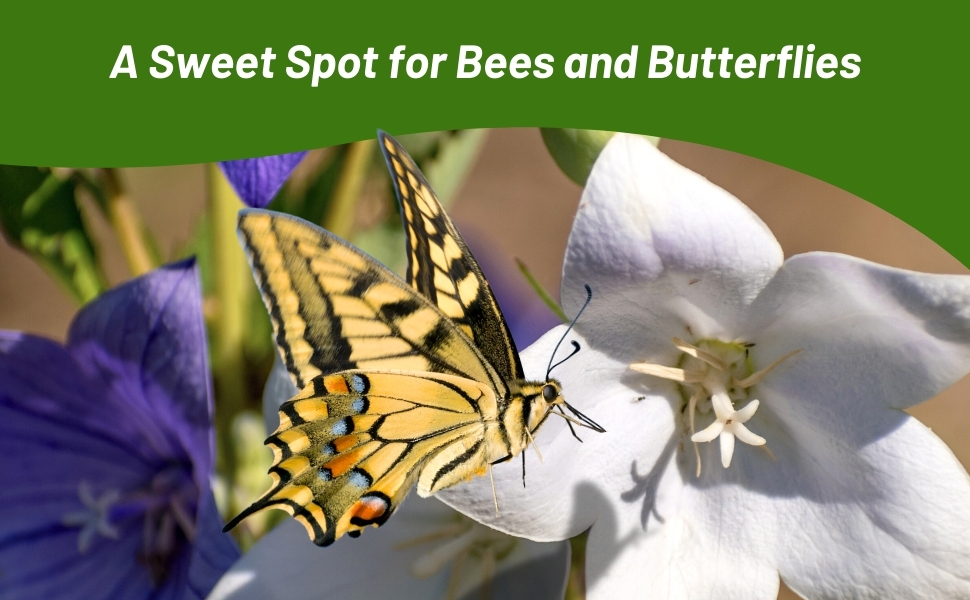
Bellflower (Campanula Carpatica Blue) - Grown from Bellflower seeds, this perennial has a mat-forming characteristic that makes it an ideal ground cover for edging the flower border. The deep green foliage makes a lovely backdrop for these gorgeous sky blue flowers.
Common Questions
Do I need to divide my Campanula Carpatica Bellflower?
Yes, Campanula Carpatica should be dived every three years.
Are Campanula Carpatica Bellflower good for borders?
Yes, Campanula Carpatica make an ideal edge for your beds and borders.
Can I grow my Campanula Carpatica in a container?
Yes, Campanula Carpatica can be grown as a container plant.
In what areas of landscape are Campanula Carpatica Bellflower grown?
Campanula Carpatica are used for edging plants, ground cover, underplantings for roses and shrubs, cottage gardens, city gardens, rock gardens and containers.
Planting Directions
TEMPERATURE
70F
AVERAGE GERM TIME
14 - 28 days
LIGHT REQUIRED
Yes
DEPTH
Do not cover the seed but tightly press into the soil
SOWING RATE
Approximately 5000 seeds covers 100 square feet or 3 - 4 seeds per plant
MOISTURE
Keep moist until germination
PLANT SPACING
10 inches
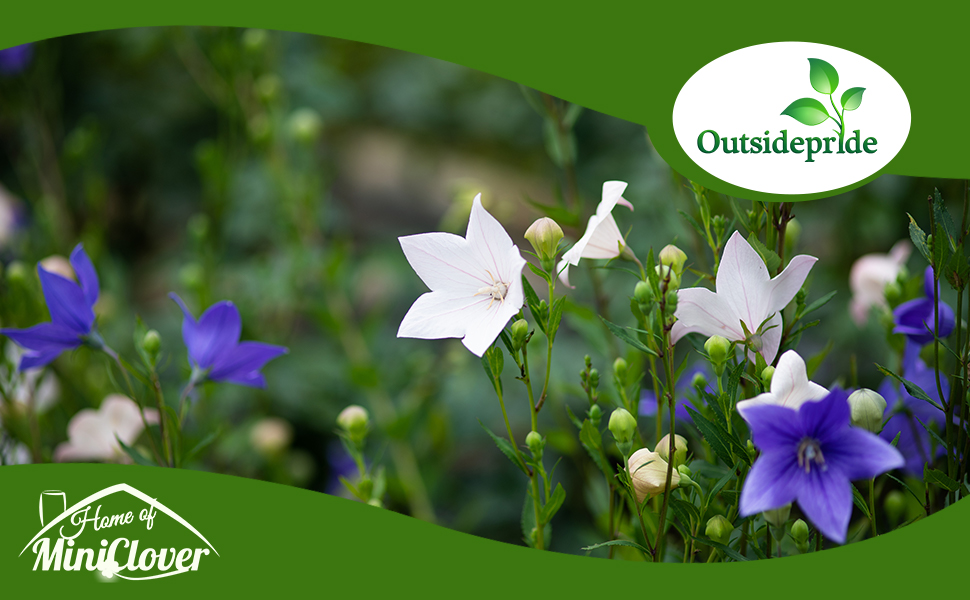
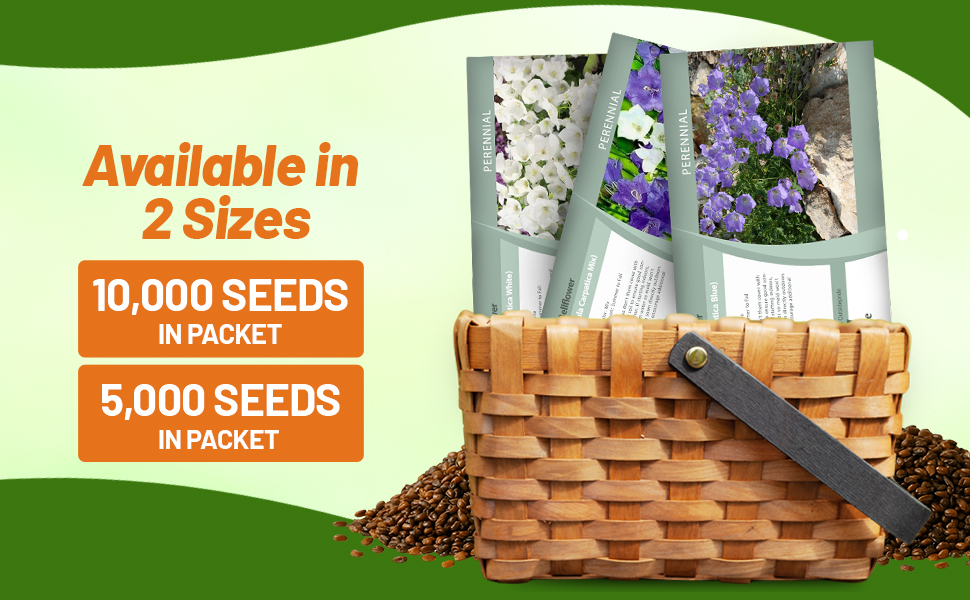
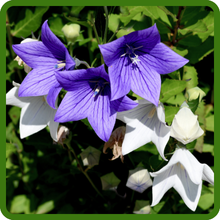

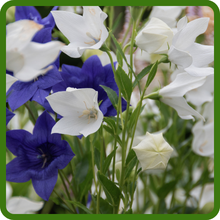
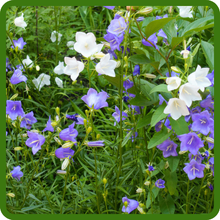
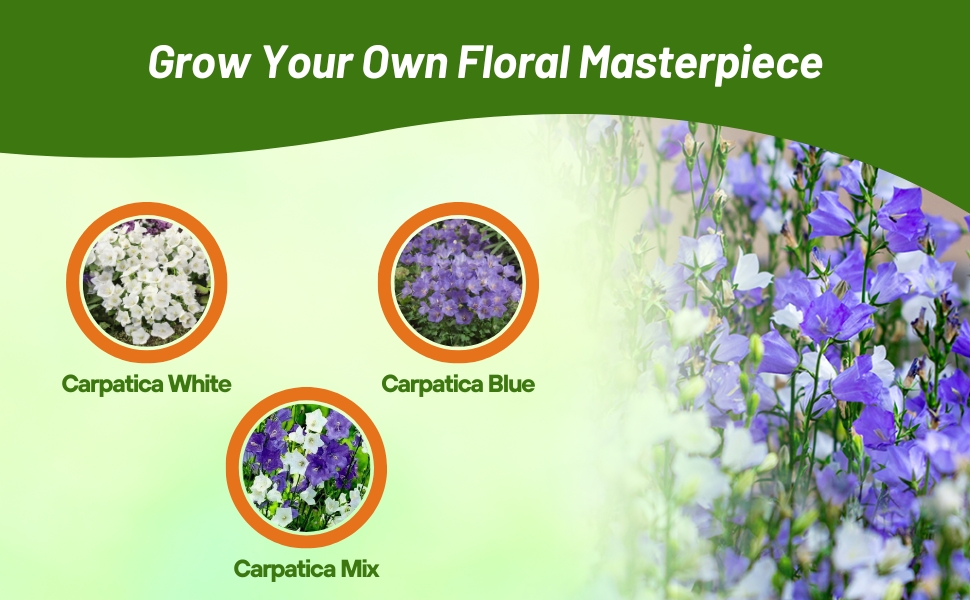
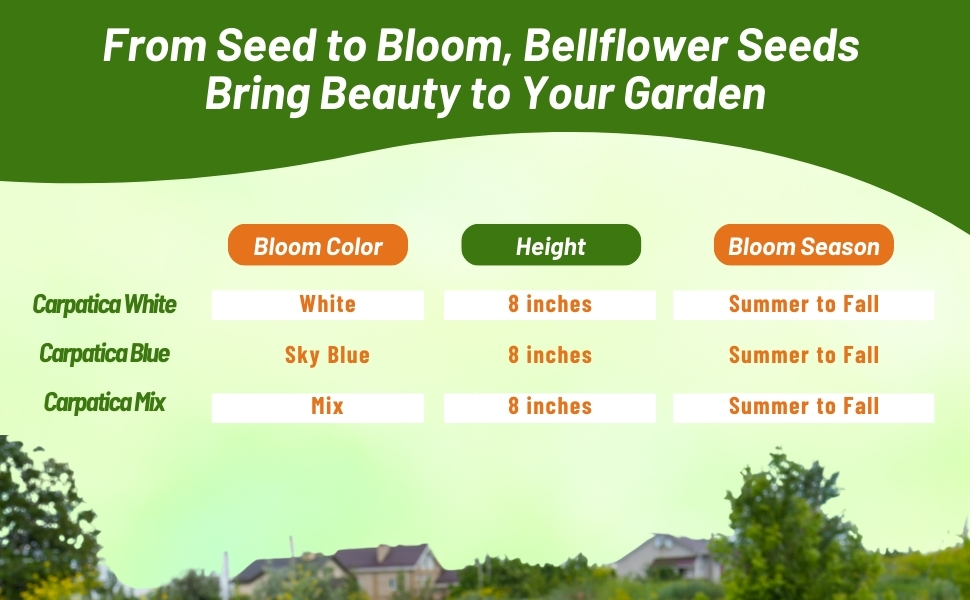

Bellflower (Campanula Carpatica White) - Easy-to-grow from flower seed, Campanula carpatica or White Bellflower is easy to establish and always dependable. These lovely white-flowered little plants are gardeners' favorites. Very attractive to hummingbirds! Campanula plants cover their low mounds of foliage with upward-facing white bells for weeks in summer.
Common Questions
Do I need to divide my Campanula Carpatica Bellflower?
Yes, Campanula Carpatica should be dived every three years.
Are Campanula Carpatica Bellflower good for borders?
Yes, Campanula Carpatica make an ideal edge for your beds and borders.
Can I grow my Campanula Carpatica in a container?
Yes, Campanula Carpatica can be grown as a container plant.
In what areas of landscape are Campanula Carpatica Bellflower grown?
Campanula Carpatica are used for edging plants, ground cover, under plantings for roses and shrubs, cottage gardens, city gardens, rock gardens and containers.
Planting Directions
TEMPERATURE
70F
AVERAGE GERM TIME
14 - 21 days
LIGHT REQUIRED
Yes
DEPTH
Do not cover
SOWING RATE
3 - 4 seeds per plant
MOISTURE
Keep moist until germination
PLANT SPACING
10 inches
Canterbury Bells (Campanula Medium Rose-pink) - Campanula seeds are so rewarding to grow, and the addition of Campanula Canterbury Bells to your spring and summer garden will be most welcome! This popular and beautiful biennial was introduced to this country from southern Spain in 1596. These sun-loving flowers will produce lovely blooms for the garden for weeks at a time.
Impressive cut flower
Canterbury Bells make impressive cut flowers, and when cut off at the stem and kept in a vase, they last for weeks, as long as the water is changed daily.

Canterbury bell seed | rose-pink
How to grow
How To Grow Canterbury Bell From Seed: Sow Canterbury Bell seeds indoors 6 - 10 weeks before your region's last frost date. Do not cover the Campanula seeds, but gently press the flower seed into the soil, and germination is usually within 14 - 21 days when the seeds are kept moist.
Transplant the seedlings outdoors in rich, well-drained soil that has plenty of compost or sphagnum peat moss worked in. Canterbury Bells need a site in full sun to partial shade.
- Sowing Rate: 3 - 4 seeds per plant
- Average Germ Time: 14 - 21 days
- Keep moist until germination
- Attracts bees, butterflies and hummingbirds
- Depth: Do not cover

Flower Care
Canterbury Bell care includes fertilizing every other month during the growing season for best height and heaviest bloom. The tall Campanula plant may need support to keep flowers upright. Cut Canterbury Bells back after flowering.
- Height: 32 inches
- USDA Zones: 3 - 9
- Season: Biennial
- Deer Resistant: Yes































